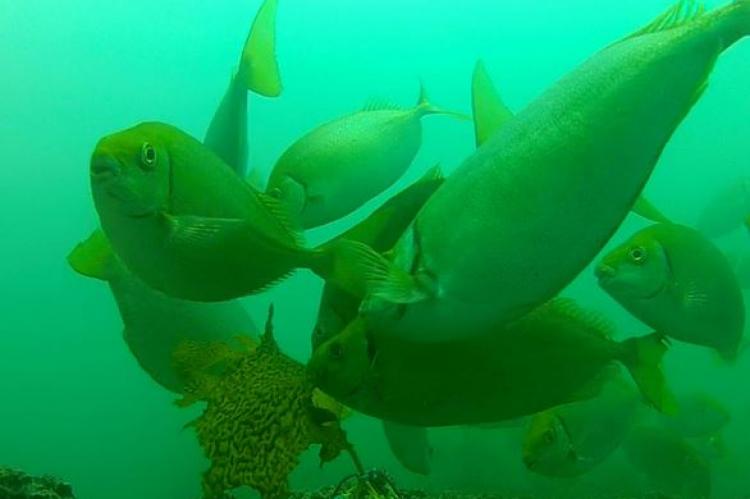Why kelp forests in New South Wales have disappeared
Seaweed-eating fish are becoming increasingly voracious as the ocean warms due to climate change and are responsible for the recent destruction of kelp forests off the New South Wales north coast near Coffs Harbour.
A team of researchers recorded underwater video around August between 2002 and 2012 every year at 12 sites along a 25-kilometre stretch of coast adjacent to the Solitary Island Marine Park off northern New South Wales.
During the 10-year period, kelp disappeared completely from all study sites where it was initially present. At the same time, the proportion of tropical and sub-tropical seaweed-eating fish in these areas more than tripled. Grazing also intensified, with the proportion of kelp with obvious feeding marks on it increasing by a factor of seven.
Dr Adriana Vergés of UNSW and the Sydney Institute of Marine Science said, “As a result of climate change, warm-water fish species are shifting their range and invading temperate areas. Our results show that over-grazing by these fish can have a profound impact, leading to kelp deforestation and barren reefs.”
The results of their study have been published in the journal Proceedings of the National Academy of Sciences.
Dr Vergés, who is the study first author, added, “This is the first study demonstrating that the effects of warming in kelp forests are two-fold: higher temperatures not only have a direct impact on seaweeds, they also have an indirect impact by increasing the appetite of fish consumers, which can devour these seaweeds to the point of completely denuding the ocean floor.”
During the study, the researchers also carried out an experiment in which they transplanted kelp onto the seafloor. They discovered that the rabbitfish and drummer fish were the most voracious, consuming the fronds within hours at an average rate of 300 bites per hour.
"The number of fish that consumed the smaller algae growing on rock surfaces also increased, and they cleared the algae faster when there was no kelp present. This suggests the fish may help prevent kelp regrowing as well, by removing the tiny new plants,” said Dr Vergés.
The decline of kelp might have major economic and management impact in Australia, where kelp forests support a range of commercial fisheries, tourism ventures and recreation activities worth more than $10 billion per year.


